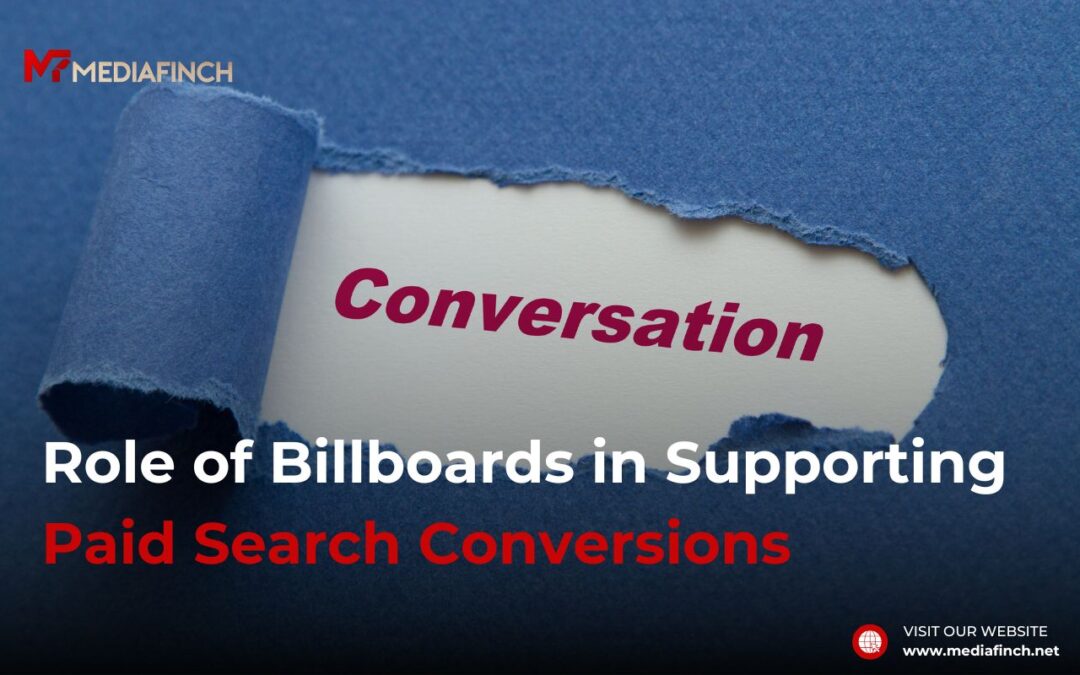Brands are constantly looking for ways to stand out and get more value from their marketing spend. One often overlooked, yet powerful, method is combining billboard advertising and paid search. While many marketers see online and offline advertising as separate worlds, the reality is that when used together, they create a synergy that fuels awareness, clicks, and ultimately—conversions.
Connection Between Billboards and Paid Search
Billboards have been around for decades, but their power is far from fading. A single glance at a well-placed ad during a commute can stick in a consumer’s mind for hours or even days. These billboard impressions increase brand recall, which is exactly what drives people to later search for a business online.
The psychology of offline-to-online consumer journeys is simple: people see something in their environment (a billboard, storefront, or product), and it sparks curiosity. Their next step? Pulling out a phone and searching for it online. That’s how consumer behavior advertising works at scale—offline exposure fuels online action.
In this way, billboards don’t just stand alone. They indirectly fuel search volume for brands, making paid ads more effective. This is the very role of billboards in supporting paid search that many businesses overlook.
How Billboards Drive Branded Searches and Click-Through Rates?
Ever noticed yourself Googling a brand name after spotting it on a billboard? You’re not alone. Studies show that billboard ads impact on conversions by driving branded search queries, which are often the most profitable in paid search campaigns.
Case studies reveal that businesses running billboard campaigns see significant uplift in PPC click-through rates. Why? Because when a consumer recognizes the brand from offline exposure, they’re more likely to trust and click on the paid ad when it shows up online.
The secret lies in consistency in billboard and ad messaging. If the tagline or offer you promote on your billboard matches the copy on your PPC ads, the consumer feels reassured—they’ve seen it before, and now it’s just one click away.
Also Read: Using Geotargeted Billboard Ads to Complement Local SEO and Paid Search
Geotargeted Billboards and Location-Based Paid Ads:
Local businesses, in particular, can benefit from combining billboard marketing strategy with PPC targeting. Imagine placing billboards in a busy downtown area while running Google Ads targeting the same geographic region. Consumers are hit with what’s known as the “double exposure effect.”
This is where OOH advertising and PPC performance intersect perfectly. A customer who spots your billboard in their neighborhood is far more likely to recognize and click on your ad when it appears online. It’s a simple but powerful way to reinforce presence in a specific market.
Real-world examples abound: restaurants, gyms, and even real estate firms have used this dual approach to dominate both the physical and digital landscape in their target areas.
Boosting Conversion Rates with Multi-Channel Visibility:
Trust is a critical factor in conversions. And nothing builds credibility like being seen across multiple channels. Consumers tend to believe brands that appear consistently—whether it’s a billboard on their commute or a PPC ad in their search results.
This multi-channel visibility is where billboards really shine. They reinforce credibility and brand authority, which directly boosts conversions from paid search campaigns. When someone sees your billboard and later finds you online, the chances of them clicking and converting go up dramatically.
It’s proof that billboard ads impact on conversions beyond just awareness—they make people more comfortable choosing your brand over competitors.
Measuring the Impact of Billboards on Paid Search:
Skeptical marketers often ask: “How do I know if billboards are helping my digital campaigns?” Thankfully, measurement has become more precise.
You can track uplift in impressions and clicks after launching a billboard campaign. Creating unique keywords, promo codes, or landing pages tied to billboards is another smart tactic. For example, using a phrase like “Search ‘Brand + City’” on a billboard lets you measure that specific query volume.
Google Analytics, brand lift studies, and customer surveys are also valuable tools. By aligning offline exposure with online metrics, you can clearly see the OOH advertising and PPC performance connection.
Best Practices for Aligning Billboard Ads with Paid Search Campaigns:
If you want maximum ROI, your billboard marketing strategy needs to complement your digital ads. Here’s how:
- Keep messaging consistent: Your billboard slogan should match PPC ad copy.
- Be short and memorable: Billboards have seconds to make an impression—keep it simple.
- Time it smartly: Align billboard placements with high PPC traffic hours, like rush hours or weekends.
This alignment ensures that both offline and online ads reinforce each other, giving you a stronger foothold in the customer’s mind.
Final Thoughts — Why Billboards Are a Secret Weapon for PPC Success?
At first glance, offline and online might seem like different worlds. But when you blend the two, you unlock a powerful multiplier effect. Billboards increase awareness, drive branded searches, and build trust—making your paid ads far more effective.
This is the true role of billboards in supporting paid search conversions: they don’t just get people to look up; they get people to look you up online.
If you’re serious about growth, don’t silo your marketing. Combine billboard advertising and paid search for maximum impact—and watch your conversions climb.
FAQs
Do billboard ads directly increase paid search conversions?
Not directly, but they increase brand recall and drive more people to search for your business, boosting conversions indirectly.
Can small businesses benefit from billboard + PPC integration?
Yes, especially with local billboards paired with geotargeted paid ads, small businesses can maximize visibility and conversions.
How long should a billboard campaign run to see PPC impact?
Typically 4–6 weeks is enough to observe increased branded searches and PPC click-through rates.
What’s the best way to measure billboard impact on PPC?
Use custom keywords, tracking URLs, geo-lift analysis, or brand search volume reports before and after billboard campaigns.

